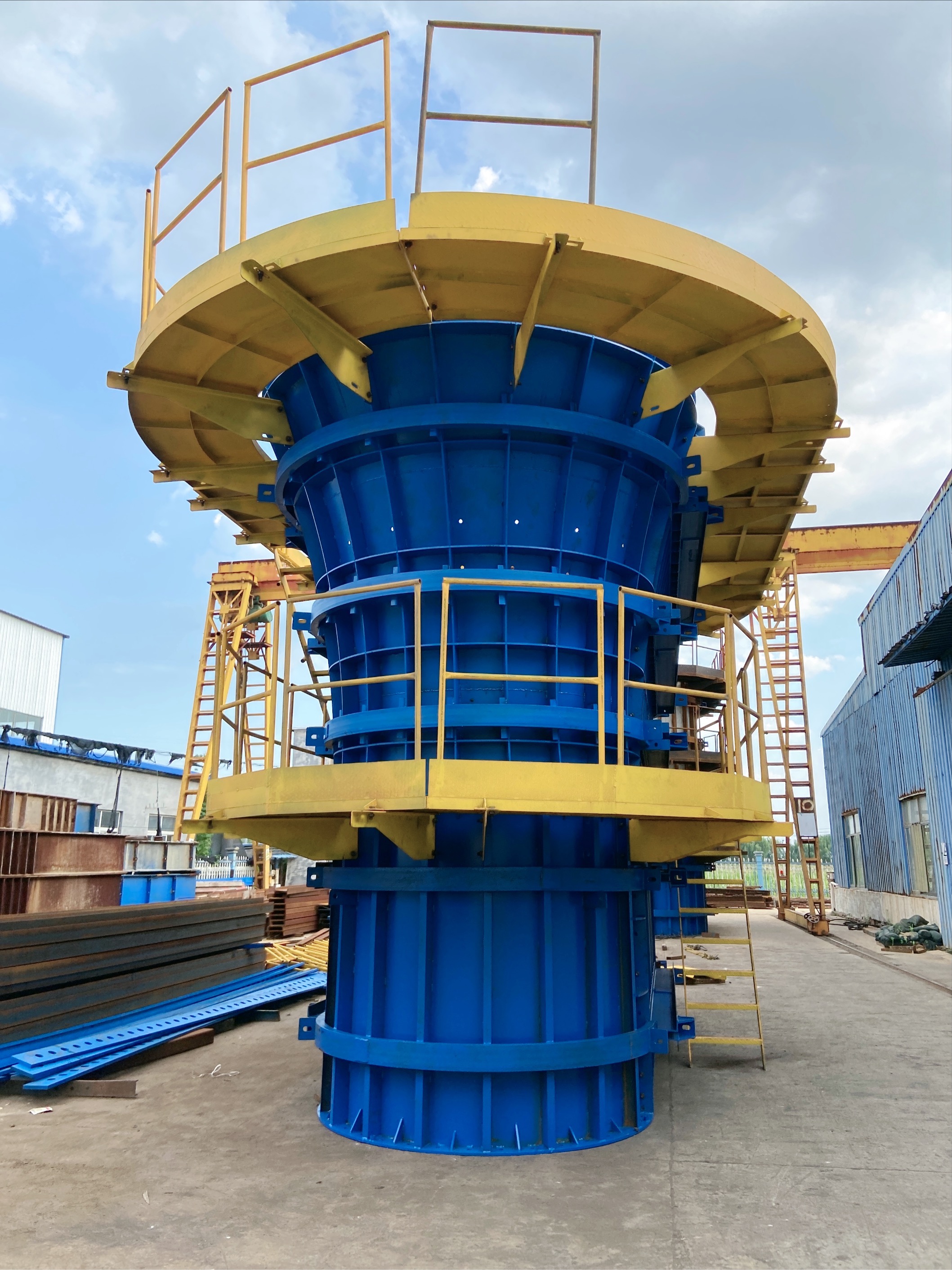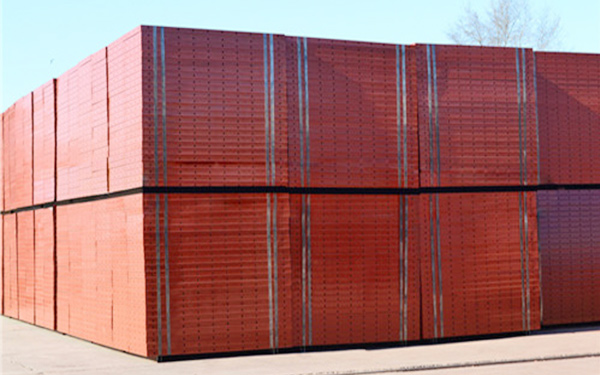Current position:
Home
News home
Industry News
Rental price of steel formwork: Analysis of key points for concrete construction of bridge special-shaped column formwork
Rental price of steel formwork: Analysis of key points for concrete construction of bridge special-shaped column formwork
source:Shandong Tianhong Heavy Industry Co., Ltd
Abstract:
For large volume irregular columns, temperature control should be carried out, temperature measuring elements should be buried, and the temperature difference between the inside and outside should be monitored in real time. When the temperature exceeds 25 ℃, cooling measures should be taken, such as passing cooling water or spraying mist
The following is an analysis of the key points of concrete construction for bridge special-shaped column formwork:
Template Engineering
Template design:
Shape adaptation: The shape of bridge irregular columns is complex, and the design template should be precisely customized based on their geometric shape. The partitioning and splicing methods should be able to closely fit the contour, and CAD technology can be used for 3D modeling to simulate the installation process in advance and optimize the design scheme.
Strength and stiffness calculation: Based on parameters such as column height, concrete pouring speed, and slump, the load borne by the formwork is calculated according to the specifications. Suitable materials such as high-strength plywood or steel are selected to ensure that the formwork is not deformed or damaged during construction, and to ensure the quality of the forming.
Template installation:
Positioning and verticality control: Before installation, use a total station or other precise measuring and setting out instruments to determine the position of the column, mark the center and contour lines. Strictly control the verticality during installation using hanging hammers, theodolites, etc., and keep deviations within the specified range. Tall irregular columns can be installed in layers, and the verticality should be corrected promptly after each layer is installed.
Splicing and sealing treatment: The splicing joints should be tight and sealed with tongue and groove joints or sealing strips to prevent leakage of grout. The joints are firmly connected with bolts, pins, etc., and key parts such as corners are reinforced with special connectors or strengthening plates to improve overall integrity.
Concrete Work
Concrete mix design:
Job performance requirements: The shape of the irregular column is complex, and the concrete needs to have good fluidity and filling properties. The slump should be controlled at 160-200mm, while ensuring cohesion and water retention to avoid segregation. Optimize the mix proportion by adjusting the dosage of cement, aggregates, and additives.
Strength and durability: Determine the concrete strength grade according to design requirements, select cement varieties and strength grades reasonably, control the water cement ratio, and ensure strength development. Add mineral admixtures and additives, such as fly ash, slag powder, water reducing agents, impermeability agents, etc., to improve durability.
Concrete pouring:
Selection of pouring method: Layered pouring can be used, with each layer thickness not exceeding 500mm. The pouring speed should be controlled to avoid excessive lateral pressure on the formwork caused by excessive concrete accumulation. For special shaped parts, auxiliary tools such as chutes and chutes are used for pouring to ensure that the concrete reaches the designated position smoothly.
Key points of vibration: Use an immersion vibrator, evenly arrange the vibration points, and the spacing should not exceed 1.5 times the radius of action of the vibrator. During vibration, insert quickly and pull slowly, inserting 50-100mm into the lower layer of concrete to ensure a tight bond between the upper and lower layers. Strengthen vibration at the corners to avoid direct contact of the vibrator with the formwork.
Concrete curing:
Moisturizing and curing: After pouring is completed, timely moisturizing and curing should be carried out to prevent the surface from losing water too quickly and causing shrinkage cracks. It can be covered with plastic film and watered for curing. Increase the frequency of watering during high temperature seasons, cover with insulation materials during low temperature seasons, and generally maintain for no less than 7 days.
Temperature control: For large volume irregular columns, temperature control should be carried out by embedding temperature measuring elements and monitoring the temperature difference between the inside and outside in real time. When the temperature exceeds 25 ℃, cooling measures such as passing cooling water, spraying water mist, etc. should be taken to prevent cracks caused by temperature stress.
Template Engineering
Template design:
Shape adaptation: The shape of bridge irregular columns is complex, and the design template should be precisely customized based on their geometric shape. The partitioning and splicing methods should be able to closely fit the contour, and CAD technology can be used for 3D modeling to simulate the installation process in advance and optimize the design scheme.
Strength and stiffness calculation: Based on parameters such as column height, concrete pouring speed, and slump, the load borne by the formwork is calculated according to the specifications. Suitable materials such as high-strength plywood or steel are selected to ensure that the formwork is not deformed or damaged during construction, and to ensure the quality of the forming.
Template installation:
Positioning and verticality control: Before installation, use a total station or other precise measuring and setting out instruments to determine the position of the column, mark the center and contour lines. Strictly control the verticality during installation using hanging hammers, theodolites, etc., and keep deviations within the specified range. Tall irregular columns can be installed in layers, and the verticality should be corrected promptly after each layer is installed.
Splicing and sealing treatment: The splicing joints should be tight and sealed with tongue and groove joints or sealing strips to prevent leakage of grout. The joints are firmly connected with bolts, pins, etc., and key parts such as corners are reinforced with special connectors or strengthening plates to improve overall integrity.
Concrete Work
Concrete mix design:
Job performance requirements: The shape of the irregular column is complex, and the concrete needs to have good fluidity and filling properties. The slump should be controlled at 160-200mm, while ensuring cohesion and water retention to avoid segregation. Optimize the mix proportion by adjusting the dosage of cement, aggregates, and additives.
Strength and durability: Determine the concrete strength grade according to design requirements, select cement varieties and strength grades reasonably, control the water cement ratio, and ensure strength development. Add mineral admixtures and additives, such as fly ash, slag powder, water reducing agents, impermeability agents, etc., to improve durability.
Concrete pouring:
Selection of pouring method: Layered pouring can be used, with each layer thickness not exceeding 500mm. The pouring speed should be controlled to avoid excessive lateral pressure on the formwork caused by excessive concrete accumulation. For special shaped parts, auxiliary tools such as chutes and chutes are used for pouring to ensure that the concrete reaches the designated position smoothly.
Key points of vibration: Use an immersion vibrator, evenly arrange the vibration points, and the spacing should not exceed 1.5 times the radius of action of the vibrator. During vibration, insert quickly and pull slowly, inserting 50-100mm into the lower layer of concrete to ensure a tight bond between the upper and lower layers. Strengthen vibration at the corners to avoid direct contact of the vibrator with the formwork.
Concrete curing:
Moisturizing and curing: After pouring is completed, timely moisturizing and curing should be carried out to prevent the surface from losing water too quickly and causing shrinkage cracks. It can be covered with plastic film and watered for curing. Increase the frequency of watering during high temperature seasons, cover with insulation materials during low temperature seasons, and generally maintain for no less than 7 days.
Temperature control: For large volume irregular columns, temperature control should be carried out by embedding temperature measuring elements and monitoring the temperature difference between the inside and outside in real time. When the temperature exceeds 25 ℃, cooling measures such as passing cooling water, spraying water mist, etc. should be taken to prevent cracks caused by temperature stress.
Disclaimer: The content provided on this website is for reference only (some information is sourced from the internet). The publication of content information is for the purpose of transmission and does not represent the views of this website. If the content involves copyright issues, please contact the website editor in a timely manner, and we will take appropriate measures to avoid unnecessary losses for both parties.
Related article
- Customized processing of bridge steel formwork: how to prevent and deal with unstable formwork support?
- Pulling out Mountains and Rivers for Win Win - Jining Tianli Employees Celebrate National Day Holiday with Tug of War Competition
- Nearby steel formwork rental station: How to deal with and prevent honeycomb and pockmarks on steel formwork?
- Customized rental of construction steel formwork: How to prevent and deal with loose joints in steel formwork?
- Steel formwork manufacturer: How to deal with and prevent steel formwork running and bursting?
- Wholesale manufacturer of steel formwork rental: Analysis of design requirements for highway steel formwork
- Template manufacturer: What are the specific risks of grout leakage to construction safety?
- List of rental prices for steel formwork: Key points for acceptance of bridge formwork after delivery to the construction site
- Customized rental of steel formwork: What are the dimensions, specifications, and models of steel formwork?
- Pulling out Mountains and Rivers for Win Win - Jining Tianli Employees Celebrate National Day Holiday with Tug of War Competition
- Nearby steel formwork manufacturers: What are the main functions of steel formwork?
- How to calculate the bearing capacity of steel formwork for rental manufacturers of construction steel formwork?
Hot article

- T梁模版
- Pulling out Mountains and Rivers for Win Win - Jining Tianli Employees Celebrate National Day Holiday with Tug of War Competition
- 力“拔”山兮,“河”作共赢——济宁天力员工欢度国庆假期之拔河比赛
- Pulling out Mountains and Rivers for Win Win - Jining Tianli Employees Celebrate National Day Holiday with Tug of War Competition
- Pulling out Mountains and Rivers for Win Win - Jining Tianli Employees Celebrate National Day Holiday with Tug of War Competition
- Pulling out Mountains and Rivers for Win Win - Jining Tianli Employees Celebrate National Day Holiday with Tug of War Competition
- Pulling out Mountains and Rivers for Win Win - Jining Tianli Employees Celebrate National Day Holiday with Tug of War Competition
Recommended article

Customized rental of construction steel formwork: How to prevent and deal with loose joints in steel formwork?

Customized rental of steel formwork: What are the dimensions, specifications, and models of steel formwork?
- Customized rental of construction steel formwork: How to prevent and deal with loose joints in steel formwork?
- Customized rental of steel formwork: What are the dimensions, specifications, and models of steel formwork?
- Steel formwork manufacturer supply specifications: What are the applicable fields for steel formwork
- 力“拔”山兮,“河”作共赢——济宁天力员工欢度国庆假期之拔河比赛
- Pulling out Mountains and Rivers for Win Win - Jining Tianli Employees Celebrate National Day Holiday with Tug of War Competition
- Pulling out Mountains and Rivers for Win Win - Jining Tianli Employees Celebrate National Day Holiday with Tug of War Competition
- Pulling out Mountains and Rivers for Win Win - Jining Tianli Employees Celebrate National Day Holiday with Tug of War Competition
- Pulling out Mountains and Rivers for Win Win - Jining Tianli Employees Celebrate National Day Holiday with Tug of War Competition



